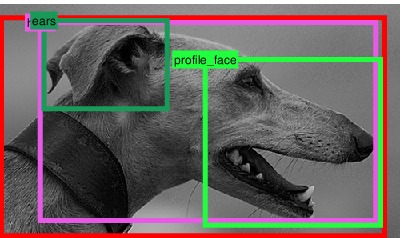 |
Strong Supervision for Part Based Models |
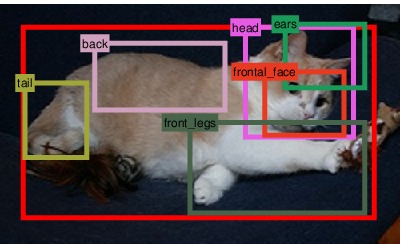 |
Background:In this project we want to investigate the effectiveness of providing strong supervision to the state of the art part based models. We are mainly focused on the task of Object Detection. More fine grained annotations can help different aspects of a model from initialization to training and testing. |
|||||||||
What we have done: | |||||||||
- Dataset of animal parts [1]In the first version of the dataset we defined and annotated up to 9 parts for the 6 animal classes of PASCAL VOC 2007 and 2010 datasets. The parts are chosen such that they roughly cover the whole animal body. We refer you to [1] for the complete list of the annotated parts. The dataset is publicly available for the scientific studies and can be downloaded from "Resources" section (bottom of the page). |
|||||||||
 |
 |
 |
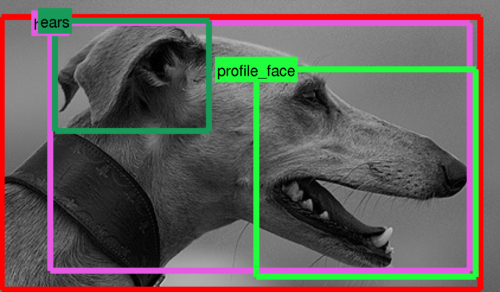 |
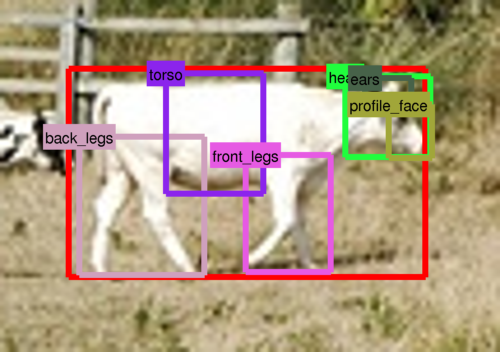 |
 |
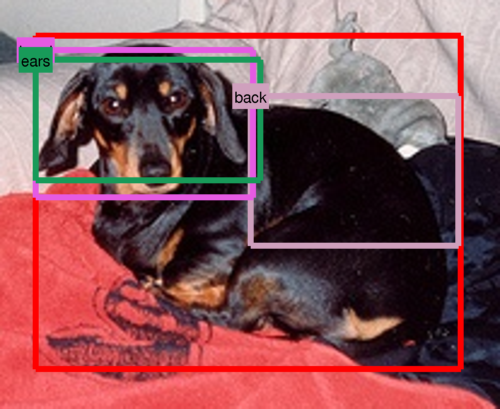 |
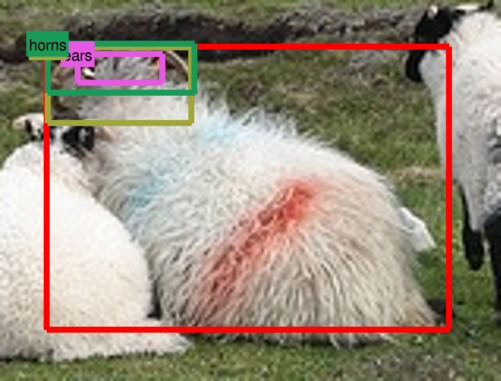 |
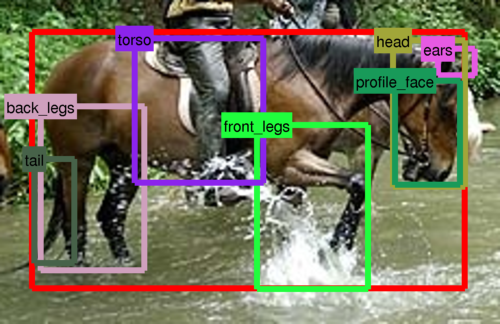 |
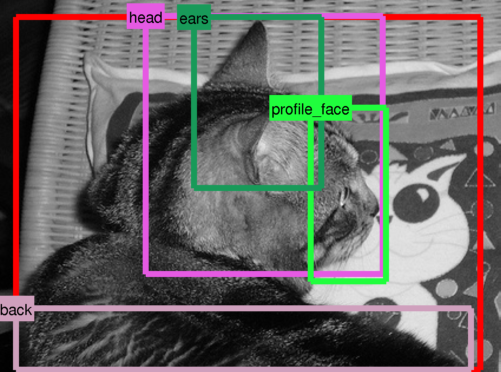 |
Click here for more (enlarged) sample annotations | |||||||||
- Strong Supervision for Deformable Parts Model [1]Deformable part-based models achieve state-of-the-art performance for object detection, but rely on heuristic initialization during training due to the optimization of non-convex cost function. This work investigates limitations of such an initialization and extends earlier methods using part-level supervision. We explore strong supervision in terms of annotated object parts and use it to (i) improve model initialization, (ii) optimize model structure, and (iii) handle partial occlusions. Our method is able to deal with sub-optimal and incomplete annotations of object parts and is shown to benefit from semi-supervised learning setups where part-level annotation is provided for a fraction of positive examples. We demonstrate significant improvements in detection performance compared to the Felzenszwalb et al. DPM and the Berkeley Poselet object detectors. |
|||||||||
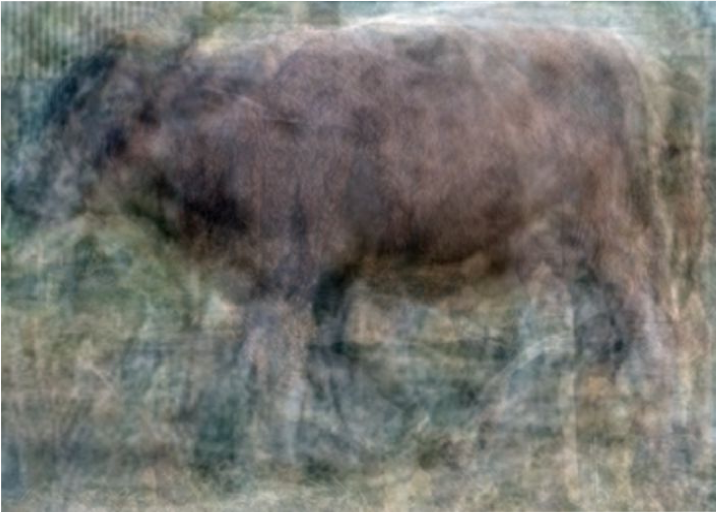 |
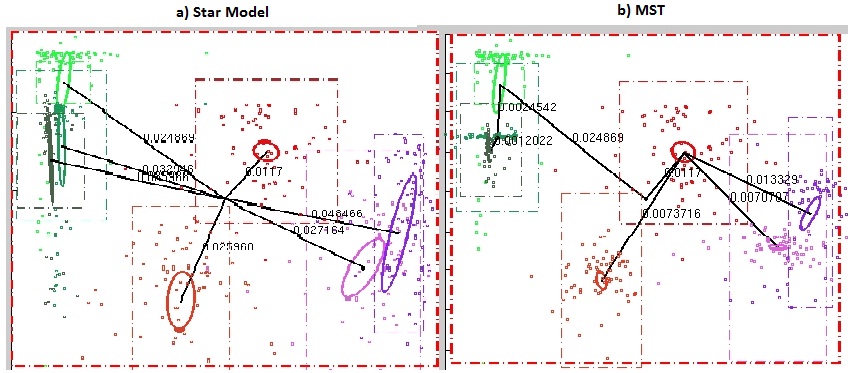 |
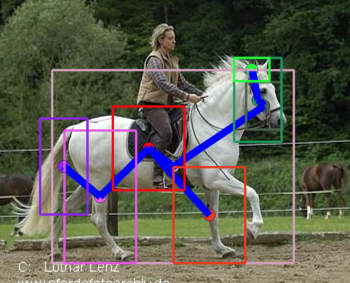 |
|||||||
People:
KTH-CVAP | INRIA-WILLOW | |
| Professor | Professor | |
| Stefan Carlsson | Ivan Laptev | |
| PhD Student | ||
| Hossein Azizpour |
Publications:

|
[1] Hossein Azizpour , Ivan Laptev. "Object Detection Using Strongly-Supervised Deformable Part Models" European Conference on Computer Vision (ECCV), Florence, Italy, 2012 PDF |
Our Results:
VOC 2007 object detection
| bird | cat | cow | dog | horse | sheep | mAP | |
|---|---|---|---|---|---|---|---|
| LSVM | 10.0 | 19.3 | 25.2 | 11.1 | 56.8 | 17.8 | 23.4 |
| [1] | 12.7 | 26.3 | 34.6 | 19.1 | 62.9 | 23.6 | 29.9 |
VOC 2010 object detection
| bird | cat | cow | dog | horse | sheep | mAP | |
|---|---|---|---|---|---|---|---|
| LSVM | 9.2 | 22.8 | 21.2 | 10.4 | 40.8 | 27.0 | 21.9 |
| Poselets | 8.5 | 22.2 | 20.6 | 18.5 | 48.2 | 28.0 | 24.3 |
| [1] | 11.3 | 27.2 | 25.8 | 23.7 | 46.1 | 28.0 | 27.0 |
VOC 2007 Part Localization
| head | front legs | fore legs | torso/back | tail | |
|---|---|---|---|---|---|
| bird | 25.3 | - | 18.2 | - | 19.9 |
| cat | 59.7 | 34.9 | - | 29.1 | 53.4 |
| cow | 35.8 | 34.6 | 42.5 | 66.5 | - |
| dog | 40.2 | 37.1 | - | 20.1 | 61.9 |
| horse | 65.7 | 35.8 | 46.7 | 66.0 | 39.6 |
| sheep | 28.9 | 34.3 | 33.7 | 65.1 | 61.4 |
Resources:
Datasets:
Note1. All annotations are in XML format (the same structure as in PASCAL VOC) and are readable by PASCAL VOC toolkits
Note2. Corresponding images should be downloaded from the PASCAL VOC webpage of the same year
- VOC 2007 animals training set
- VOC 2007 animals test set note that not all parts are annotated in test set, but at least those with reported part localization performance in [1].
- VOC 2010 animals training set
Models:
Trained models for VOC 2007 and 2010 animal classesDetection Software:
Detection and visualization codesTraining Code
Full training and detection code with a demoContact:
contact Hossein Azizpour via the e-mail address: familyname@kth.se if you see any inconsistencies in the web-page/dataset or have questions/remarksLinks:
Computer Vision and Active Perception LaboratoryINRIA WILLOW Group